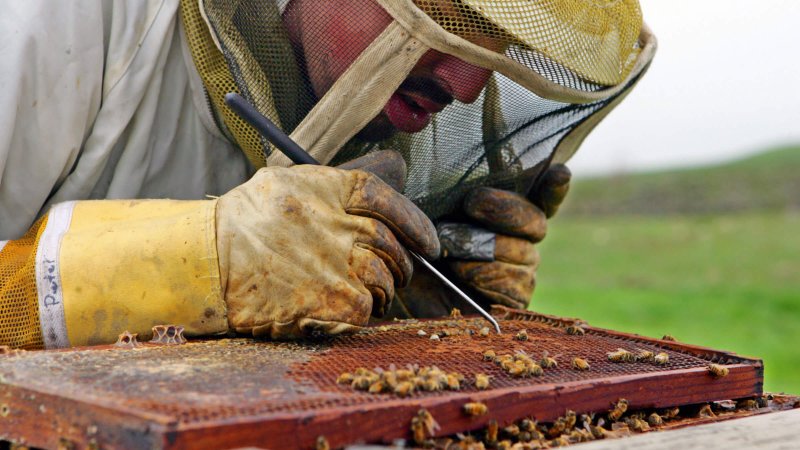The impact of pesticides on pollinators remains an ongoing concern, especially as new research highlights the complex web of pesticide residues entering the internal hive environment and colony food stream1,2. Honey bees (Apis mellifera) provide critical pollination services valued at over $200 billion worldwide3 and $17 billion in the US.
Commercial beekeepers have increasingly struggled with high rates of colony morbidity and mortality, in part because of increased pressure of the parasitic varroa mite (Varroa destructor), pathogens (primarily viruses and bacterial infections), pesticide contamination of hive matrices, poor nutrition, and frequent queen losses.
In this study, we … measur[ed] the pesticide exposure within the internal hive environment during the entire beekeeping season, and relating these measures to colony health outcomes.
… We found clear links between an increase in the total number of products in wax and colony mortality. In particular, we found that fungicides with particular modes of action increased disproportionally in wax within colonies that died…
. . . .
Low amounts of neonicotinoid insecticides… were found in six wax samples; two were contaminated with imidacloprid… The majority of [bee health problems] came from the presence of varroacides (71.1%), followed by insecticides (28.3%) and fungicides (0.5%), while herbicides contributed minimally (<0.01%).
The GLP aggregated and excerpted this blog/article to reflect the diversity of news, opinion and analysis. Read full, original post: In-hive Pesticide Exposome: Assessing risks to migratory honey bees from in-hive pesticide contamination in the Eastern United States































